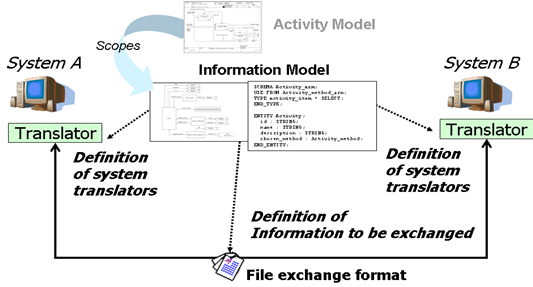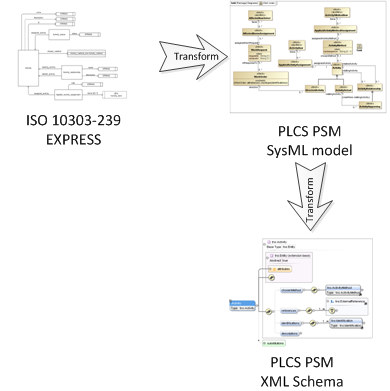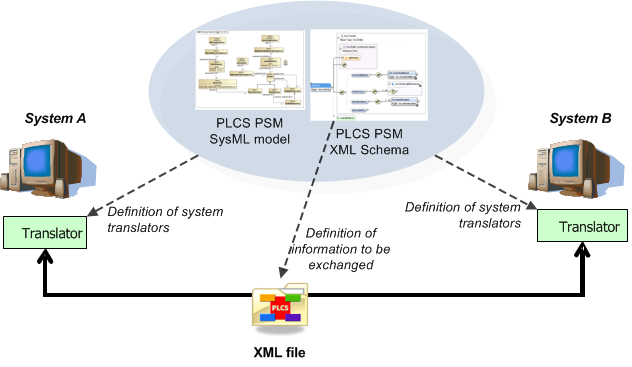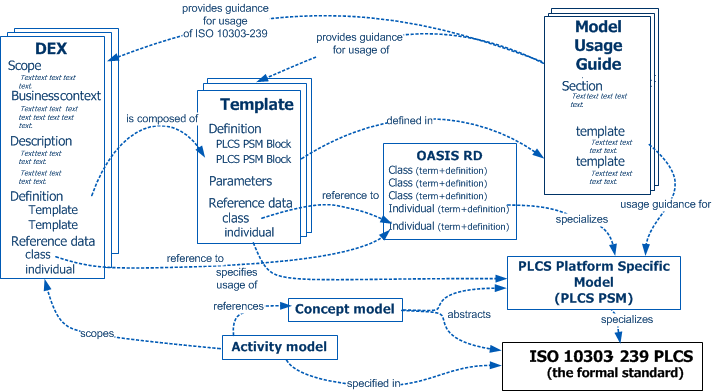This technical description provides an introduction to the ISO 10303-239 PLCS (Product Life Cycle Support) standard and key components for its use. Namely:
These components and their relationships are described and an account of how these components may be further specialized by others is provided. Brief descriptions of the PLCSlib development environment and the publication status procedures used are also given.
ISO 10303-239 (PLCS) specifies the information required to support a product throughout its life. It is one of the ISO 10303 family of standards, generally known as STEP (STandard for the Exchange of Product model data). This family of standards includes the Application Protocols (APs) which define particular business viewpoints of a common information model, and the PLCS standard belongs to this series. APs are numbered sequentially within STEP. PLCS is AP number 239 and is therefore sometimes referred to as AP239 or as "ISO 10303-239".
The scope of a STEP AP is initially described in an Activity Model, using the IDEF0 modelling language, which defines the activities and information flows between activities that the AP can support. The activity model is informative rather than normative.
 in PLCSlib.
in PLCSlib.
ISO 10303-239 PLCS is intended to "provide through life support for product". The Activity Model defines four major activities:
- Manage information to support a product;
- Generate support solutions;
- Commission support system;
- Provide support.
These are further decomposed and analysed in the more detailed layers of the Activity Model.
The Activity Model that has been developed for a STEP AP serves as the basis of an information model which represents the information produced by or used by the activities described in the Activity Model. It is this information model that provides a formal representation of the data structures that are shared or exchanged during the life cycle of a product. The information model is normative. This is illustrated in Figure 1 which shows how a STEP AP defines the scope of the information to be exchanged or shared, and offers a range of exchange formats independent of technology to support that exchange. These formats define the requirements for translators applied to specific systems.
The information model of ISO 10303-239 PLCS is capable of representing all the information required to cover the entire life cycle of a product. It is not however, aimed at any particular business or industry domain. Because it is designed to be used in many different business applications, it is a large, generic information model. Whilst this ensures that ISO 10303-239 PLCS has a wide range of applications, this also implies that different users will focus on different (though overlapping) areas of the model and that different users, with different information requirements, may interpret the information model in different ways. In order to address these considerations, the PLCS community has developed a number of mechanisms for partitioning the information model into smaller components and for providing additional (and more precise) semantics that add business specific terminology.
The PLCS community (through the OASIS PLCS TC ) has identified:
- A number of general-purpose subsets of the ISO 10303-239 PLCS model to support the information exchange and sharing requirements of particular activities. These subsets are called Data Exchange Specifications (DEXs). They are built from reusable components (called Templates) that ensure interoperability between DEXs.
- A set of Reference Data that provides greater semantic context to the ISO 10303-239 PLCS model and which may be further tailored to particular business needs. The set is stored in a Reference Data Library (RDL).
- An associated set of Model Usage Guide documents which ensure that ISO 10303-239 PLCS is used consistently.
- The DEXs are grouped into Contexts in which a specialized vocabulary is employed. The context may be an individual organization, a larger business community, or a particular project (or initiative). In some cases the context represents a standards organization such as OASIS or Aerospace and Defence ASD.
The need for precise semantics exists at different levels, from the business independent semantics and guidelines provided by OASIS PLCS TC, through business domains (e.g. automotive, aerospace, military), down to specific projects. It is anticipated that the same process (using DEXs, RD, and usage guidelines) is applied at all levels, and that all users of ISO 10303-239 PLCS will take advantage of the starting point given by the work within OASIS PLCS TC.
The development environment for all of these components of PLCS is called "PLCSlib".
ISO 10303-239 Product life cycle support (PLCS) specifies an information model that defines what information can be represented and exchanged to support a product through life. The information model is specified in the ISO 10303-239 standard using the EXPRESS information modelling language.
In order that the information model is more suited to working with UML based software tools and that the implementation of XML based data translators is easier, a Platform Specific Model (PSM) has been derived from the ISO 10303-239 EXPRESS information model. This is referred to as the PLCS PSM. It is represented in SysML and tailored for implementation in XML. Hence an XML Schema has been derived from the EXPRESS based information model.
The relationship of the PLCS PSM to the EXPRESS based ISO 10303-239 information model is shown in Figure 2.
The role of the PLCS PSM in data exchange is illustrated in Figure 3. This shows how the PLCS PSM information model defines the scope of the information to be exchanged or shared, and an XML exchange format that the translators shall conform to. The XML Schema and/or the PLCS PSM model define the requirements for translators applied to specific systems.
Because the information model defined by ISO 10303-239 (PLCS) (and hence the PLCS PSM) is a generic model supporting the whole life cycle of a product, it has a scope that is wider than most applications, business processes or single data exchanges. Consequently Data EXchange Specifications (DEXs) have been developed by the OASIS/PLCS TC members to support the usage of subsets of the model.
A DEX specifies the subset of, and associated usage guidance for, PLCS PSM required for a specific business purpose, e.g. Consumption Of Life DEX - DEX reporting the usage of a product such as a jet engine. DEXs can be also used to contract for information, and software applications may declare conformance to a DEX, thus ensuring interoperability.
The OASIS DEXs, developed to support common information exchange requirements identified by OASIS/PLCS TC members, are built from "Templates". The Templates describe and specify how common business concepts should be represented using the PLCS information model. Templates have been defined at a fine grained level to encourage maximum re-use across different DEXs, hence ensuring consistent usage of the PLCS information model. For example, the Template part is used to represent a part, and can be reused whenever this is required.
Further usage guidance on how different business concepts should be represented using Templates is provided by Model Usage Guides. Model Usage Guides describe the business concepts themselves and place the Template in the context of the overall PLCS information model.
As previously discussed, the information model defined by ISO 10303-239 (PLCS) is generic. It holds no business specific terms. Instead, business semantics are represented by extending the PLCS information model through classification with so called Reference Data (RD). This provides a mechanism for adapting the generic model to one more specialized for given business domains. The use of the Reference Data is identified within the DEXs, Templates and Model Usage Guides.
In summary:
- A DEX identifies and documents a subset of the ISO 10303-239 (PLCS) information model required for a specific business purpose;
- The usage of the PLCS information model identified by a DEX is defined through Templates. The Templates provide a precise specification of how the model should be used to represent a given concept;
- Model Usage Guides provide further guidance on how the information model and Templates should be used;
- Reference Data provides an extensible vocabulary that adds business specific semantics to the information model;
- DEXs, Templates and Reference Data are grouped into Contexts which reflect the business domain for which they are applicable.
This is illustrated in Figure 4. Further technical details of the PLCSlib components are provided in the relevant PLCS technical sections:








